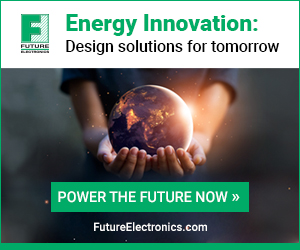The Right Approach for the Right Reasons
By Dennis Morrow, Radius Innovation and Development
This and other interesting material appear on the Radius Innovation and Development Blog
Flashback a few years ago and think of the conversations you had with your colleagues and friends. How often did the topic of algorithms come up? We’re hedging not that frequently (unless of course you’re a math professor or parent of a teenager). Now, think of how often the word algorithm sneaks into your conversations.
As we talk about what is showing up in our Facebook newsfeed or are determining the best route to get from point A to B – algorithms are hovering in the background. As we know algorithms and big data are changing the way we work, live, and think. In fact, let’s be honest, the very idea for this blog post came from some convincing algorithms that served up some content in various newsfeeds, search results, and email newsletters.
The algorithms just seem to know. Or do they? When it comes to human experiences, design, innovations, and helping the user – algorithms are making an impact. What we want to know and caution is in the use of these all-knowing algorithms for the right reasons.
It’s super easy to get caught up in the latest buzz words and technologies – Artificial Intelligence, Machine Learning, and algorithms in particular. The problems with the latest buzz in making sure that it doesn’t overpower what it is we’re really trying to do – make real innovation with positive outcomes.
This brings us to our question: how do we work with the benefits of these technologies while keeping the focus on the user and realizing your ideas in the best way possible. Not in taking advantage of every piece of technology and crowding the innovation to the point where the focus and goal is lost. The focus is on the meaning of success – delivering your customers their ideal experience.
Why Are Artificial Intelligence, Machine Learning, and Algorithms Different?
The Internet, mobile, HTML, 3D printing, and smart packaging are real life-changers – and yes we understand that some of these are life-changers in thanks to the power of the AI, machine learning, and algorithms. However, we want to think and talk about what the application of technology inherently does or doesn’t do.
Whereas the Internet has allowed us to connect with you, deliver better ways to do our work, to open lines of communication, and helped us learn about the stranger on the other side of the World – the algorithms and the learning they power doesn’t inherently do this. No, our AI-powered tools, ideas, and visions are only as effective as we want them to be or not to be.
While we’re excited about what data, algorithms, and AI can do for us, it’s important to know why you (or we) have gone done this route. Is this making the product or service better? Does it matter to the user if it’s AI-powered? What are the implications of the AI power? Did it help us realize the best innovation of your idea? Is it technology for the sake of technology?
This brings us full-circle to the principles of UX/UI and keeping the focus human. Knowing what your customers are really looking for and how you can best deliver this to them. Making sure the focus on solving the problems in the best way possible – keeping the focus on the users – not solely on the technology. There is a deep connection between design and success, and it’s vital that this is not misplaced.
Human-Focused Design to Improve AI
We don’t want you to get the wrong idea – we are as excited about data, algorithms, AI, and ML as anyone else. However, we want to always know why we’re making the decisions we are. Did we decide on the design because it allowed us to use that cool widget or did we choose the design because our human factors experts told us that this is what people want?
AI and its cousins can and are working in UX – it’s in taking this measured approach that allows you to still keep the focus on realizing the idea in the best way possible. In fact, maybe the smarter approach is in flipping the focus – instead of putting AI into the user design but instead using human-focused design to improve AI.
- Remembering the humans. When thinking about how you can realize your idea – don’t lose sight of the humans you’re working for. Think of how your design, use of materials, and communication methods can deliver the best possible outcome. For example, a hearable that is easy-to-use, is comfortable, and gives exercise cues or monitors heart rate. Don’t focus on the data for the sake of the design. If the hearable is hard to get in the ear, it doesn’t matter how smart it is.
- Helping not doing. Remember, people want to know and feel like they’re in charge. We all want control on what we see, hear, and read. The emergence and understanding of how AI has changed this, makes it crucial that people still have the decision-making power. We want to have the opportunity to scroll through streaming services and find what appeals to us at that moment – when AI takes over, our options are limited and we feel forced into making choices – eventually getting frustrated with limited options.
- Relationship building. People return to the products and services that they trust and believe in. Yes, that old scale in the bathroom might not be using the latest technology, but when I stand on it – it tells me how much I weigh. This is what I want to know. I trust it to do its job. We know people grow attachments to products because they feel comfortable with them – developing a real connection with the material.
It’s an exciting time to be an innovator. The opportunities to make and realize outcomes is huge. It’s in doing this the best way that creates the real possibilities. Yes, some might say this is idealistic – but we’re in this for the long-term and want to see lasting innovation.












